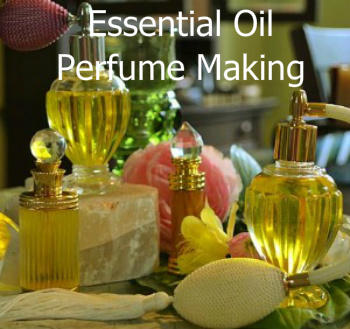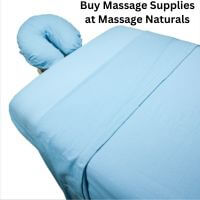- Home
- Essential Oils for Women
- Essential Oil Perfume
As an affiliate for Bookshop, Amazon, and other programs, I may earn a small commission for products purchased through links. This doesn't affect the price you pay. Privacy policy and disclosures.
Search this site:
Essential Oil Perfume Making Tips and Recipes
Essential oil perfume making is an art learned through experience. I'll give you a few basics here and point you to more detailed perfume-making sources and recipes.
Supplies for Essential Oil Perfume Making
Aromatherapy: A Complete Guide to the Healing Art has a detailed chapter on blending perfumes and lists the following required supplies:
- Blotter paper
- Carriers: oils, glycerin, distilled water, hydrosol, and/or alcohol
- Clean empty glass bottles
- Eyedropper(s)
- Funnel
- Cleanup supplies: paper towels, tissues, alcohol
- Labels (for bottles) and pencil and notebook (to keep track of your blending successes and failures)
Typically, a perfume made with alcohol is about 15 to 30 percent essential oil, 70 to 85 percent alcohol ethyl, and zero to 10 percent distilled water by fluid volume, according to the ACHS Perfumery Manual from the Australasian College of Healthcare Sciences.
However, you can also make perfumes using carrier oils without alcohol or water.
Aromatherapy Notes
Something you want to take into consideration when blending essential oils perfume recipes is the concept of essential oil notes. "Note" refers to the evaporation rate of a fragrance, which depends on its specific weight and energy. The three notes are:
- Top note – quick evaporation. Top notes tend to be light, fresh, and uplifting. Examples are bergamot, eucalyptus, lemon, orange, peppermint, and pine.
- Middle note – average rate of evaporation. Middle notes are often warm and soft fragrances. Examples are chamomile, geranium, juniper, lavender, and rosemary.
- Base note – slow evaporation. Base notes are often intense and heady. Examples are cedarwood, clove, patchouli, and sandalwood.
In general, you want to avoid mixing oils that all have the same note, and instead use all three notes, but there are no hard and fast rules.
The Complete Book of Essential Oils and Aromatherapy has a section on making your own perfume and eau de cologne, including quite a bit of information on aromatherapy notes.
What Is the Difference Between Perfume and Cologne?
Cologne has a weaker, more subtle scent than perfume. A perfume consists of three scents known as layers of fragrance: a strong, short-lived top note, a more subtle middle note with a fragrance that lasts for several hours, and a most subtle base note that lasts throughout the day. Cologne has only one (sometimes two) layers and does not smell as strong or last as long.
Although perfume is commonly assumed to be for women and cologne for men, that's not necessarily the case. That association arises because perfume typically uses flowery fragrances, and colognes usually have a musky scent.
Essential Oil Perfume Recipes
Here's an oil-based recipe for essential oil perfume:
- 4 drops orange essential oil
- 4 drops sandalwood essential oil
- 3 drops lavender essential oil
- 2 drops geranium essential oil
- 1 ounce (2 tablespoons) carrier oil
Blend ingredients in a clean bottle. Use as desired.
Source: Aromatherapy: A Complete Guide to the Healing Art
Solid Balsam Essential Oil Perfume Recipe
- 4 tablespoons jojoba oil
- 1/2 ounce (14 grams or 1 tablespoon) beeswax
- 20 drops balsam fir essential oil
- 14 drops yuzu essential oil
- 7 drops neroli essential oil
- 4 drops jasmine oil
- Glass jars to hold about 2.5 ounces (75 ml) perfume
- Place a couple inches of water in a cooking pot and bring to a boil.
- Place a Pyrex measuring cup or other heat-proof class container in the pot.
- Place the beeswax in the cup and let the beeswax melt.
- Blend in the jojoba oil.
- Remove the blend from the heat
- Stir in the essential oils, using a glass stir rod or the handle of a spoon.
- Pour the perfume into the glass jars.
- Let the perfume solidify.
- Use perfume as desired on your wrists, neck, or anywhere.
Source: Aromahead
Alternative scent combinations:
- Exotic floral: 22 drops sweet orange, 14 drops frankincense, 12 drops rose
- Citrus blossom: 15 drops lemon, 15 drops line, 15 drops neroli
- Floral garden: 15 drops patchouli, 10 drops lavender, 10 drops geranium, 9 drops lemon
Adapted from Natural Perfume With Essential Oil. Recommended book if you want to get into the intricacies of essential oil perfume making.
Buy essential oils: Aromatics International or Rocky Mountain Essential Oils.
Photo Credit: Angela Andriot [CC-BY-SA-3.0], via Wikimedia Commons




